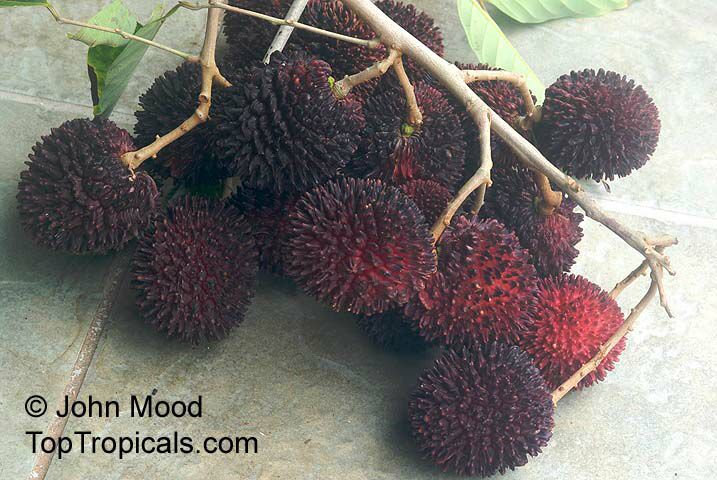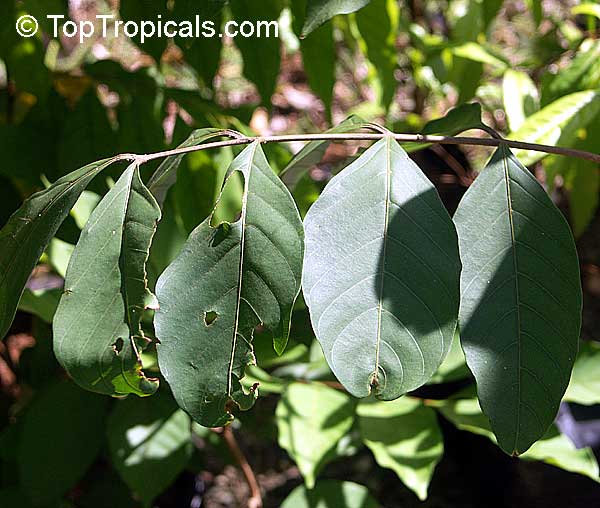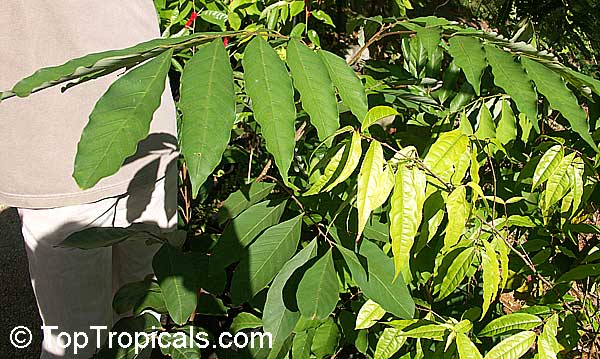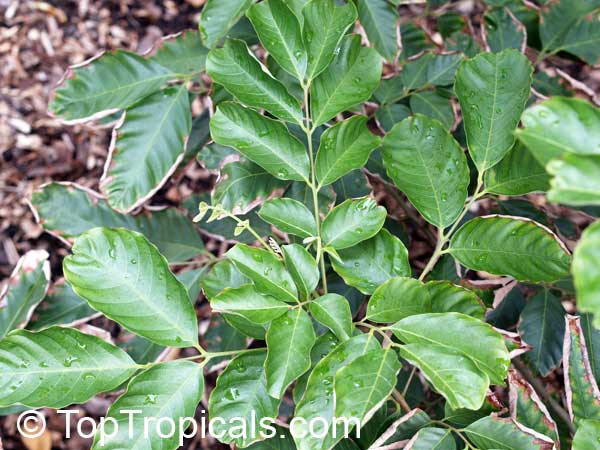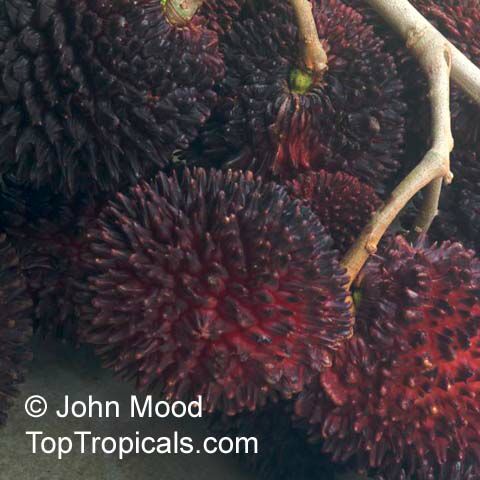Nephelium rambutan-ake (Pulasan)
Top Tropicals Plant Encyclopedia
Botanical names: Nephelium rambutan-ake, Nephelium philippense, Nephelium mutabile, Nephelium intermedium, Litchi ramboutan-ake
Common names: Pulasan, Bulala, Ngoh-khonsan, Ramboutan-ake
Family: Sapindaceae
Origin: Southeast Asia




The Pulasan, or Poolasan is closely allied to the Rambutan and sometimes confused with it.
Dioecious tree reaching 30-45 feet (9-14 m), with a short trunk and a wide, rounded crown. Alternate, compound leaves with 2-5 pairs of glossy leaflets. Flowers small, greenish, in branched axillary or terminal panicles. The fruit is round to ovoid, about 2-3 inches (5-7.5 cm) in length, with a bumpy red, purple or yellow peel. The pulp is white or yellowish, translucent, juicy, sweet and aromatic. Delicious fruit, sweeter than the rambutan and lychee, but very rare outside of southeast Asia. An ultra-tropical species, needing lots of water for much of the year, and a humid climate.
Pulasan is propagated by seed, grafting or air layers. Seed propagation is not usually preferred, as the trees may be males or have fruit of inferior quality. Both bud and approach grafting are used. Grafted trees begin to produce fruit at about 3-5 years.
The Pulasan is from the humid tropics, and grows well where abundant moisture is available year round, although it does tolerate brief periods of drought. The best growth is achieved in fertile, well drained soils, from sea level to about 1,000 feet (305 m) elevation. Regular fertilization will also improve growth and fruiting.
The flesh of ripe fruits is eaten raw or made into jam. Boiled or roasted seeds are used to prepare a cocoa-like beverage.
